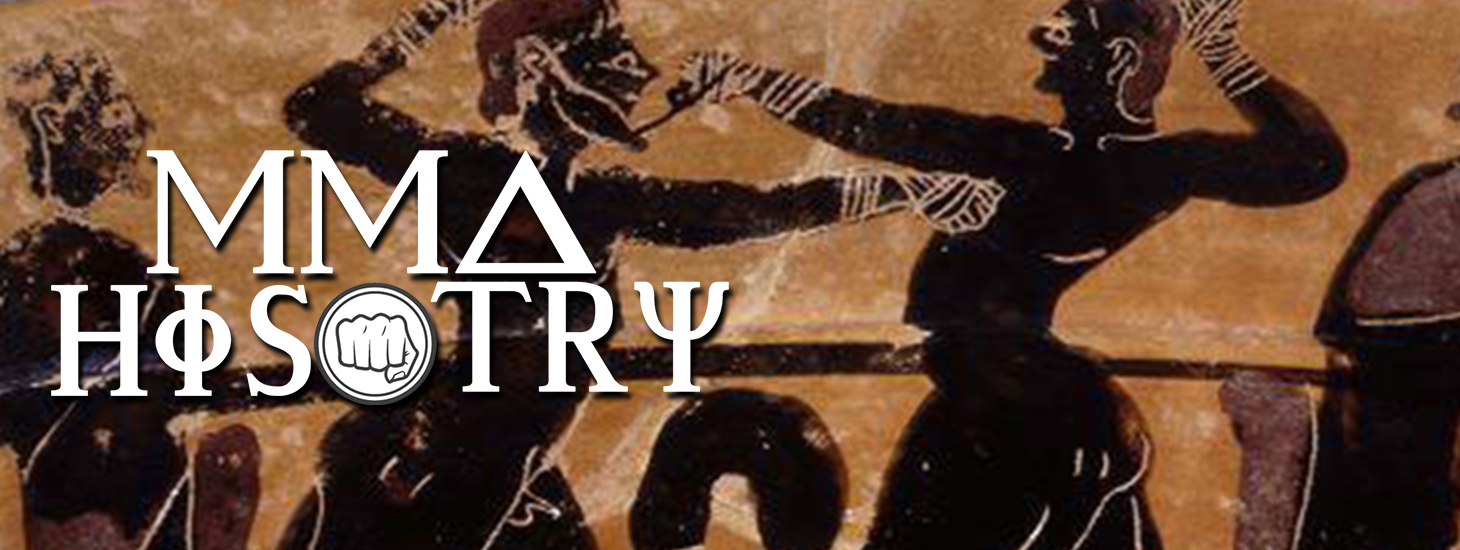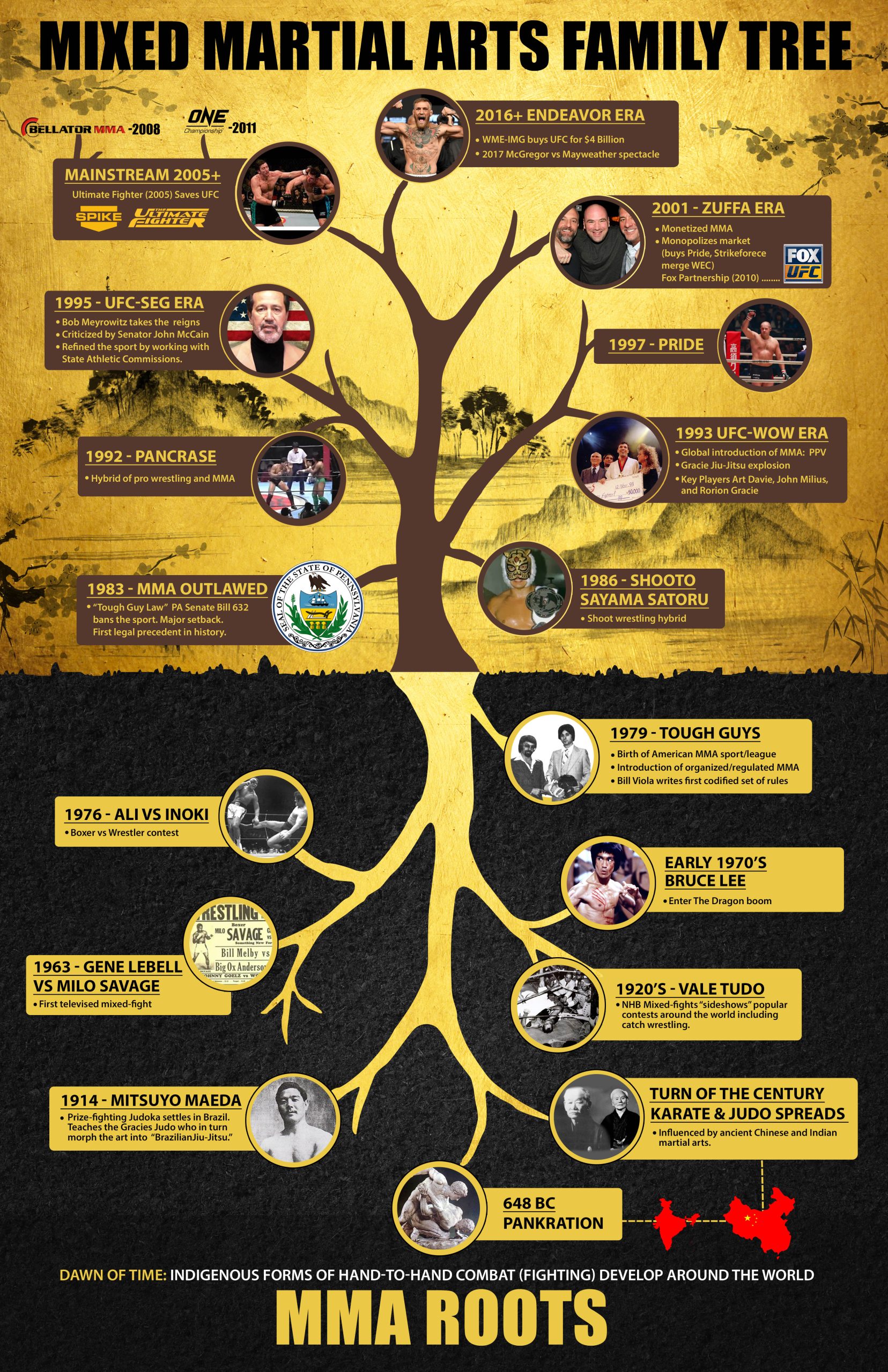MMA History and Evolution
The history of mixed martial arts
“It is difficult to understand the universe if you only study one planet”
-Miyamoto Musashi, Book of Five Rings
 Hand to hand combat has roots in prehistoric times, influencing every culture since the dawn of mankind. Ancient inscriptions reveal that some type of fighting has always existed, seemingly embedded in our DNA. Be it a “fight” or “flight” response from the threat of imminent danger, aggression and survival are basic instincts. Building a better warrior was and continues to be a natural progression (self-defense against oppression and/or predatory warfare).
Hand to hand combat has roots in prehistoric times, influencing every culture since the dawn of mankind. Ancient inscriptions reveal that some type of fighting has always existed, seemingly embedded in our DNA. Be it a “fight” or “flight” response from the threat of imminent danger, aggression and survival are basic instincts. Building a better warrior was and continues to be a natural progression (self-defense against oppression and/or predatory warfare).
Fighting lies at the very core of civilization, a transgression that leads to the inevitable: WAR. Some of the earliest literary works depict human conflict; a the thirst for power quenched only by violence. The Iliad conjures images of the mighty Achilles and his wrath during the Trojan War while the Bible chronicles epic battles of good versus evil throughout the scriptures. Wars of expansion, wars of defense or Holy wars all share one thing in common: a will to win. Sun Tsu said it best, “If fighting is sure to result in victory, then you must fight.” His vivid narrative of military tactics became a definitive lesson in strategy, the Art of War.
Martial Arts or the “Arts of Mars” in Latin is derived from the Roman god of war. Its military connotation, “kill or be killed,” is a philosophy that resonates among thousands of armed and unarmed methods of self-defense; many steeped in tradition and influenced by cultural, religious, or ethnic backgrounds. Today, “martial art” has become a catch-all, almost generic term that universally and collectively describes combat systems from around the world dating back to antiquity. What is and what isn’t technically a martial art is truly a subjective topic, a debate reserved for another day.
The origins of martial arts in general are shrouded in mystery and legend, more often than not based on hyperbole, stories passed down from generation to generation. Entwined deep within Greek mythology, Pankration (literally meaning “all powers”) was introduced to the Ancient Olympic Games in 648 B.C., a challenge said to have been created in the spirit of Heracles and Theseus. Scholars regard this hybrid of Hellenic wrestling and boxing to be one of the earliest versions of mixed martial arts. These primal competitions garnered national fanfare while imposing very few rules; death unfortunately was considered an occupational hazard.
Many experts credit the conquests of Alexander the Great as a pervasive influence on primitive Martial Arts. His army inadvertently spread the fundamentals of Pankration throughout the world, including India. Popular folklore glorifies an Indian Monk named Bodhidharma, a journeyman who traveled to China establishing Zen Buddhism in the 6th Century A.D. Many believe the training regimen he taught the Shaolin Monks later spread and impacted the development of traditional martial arts around the world.
Upon the emergence of the 20th century, Vale Tudo (Portuguese meaning “everything allowed”) matches throughout Brazil left a modern footprint on MMA. The scene cultivated adaptations of judo that emphasized ground fighting; namely the creation of Brazilian jiu-jitsu and later Luta Livre (Brazilian free fighting). In the Pacific Rim, Eastern and Western styles clashed head-to-head in mixed-fights known as Merikan (Japanese slang for American) while no-holds-barred fisticuffs were a regular feature at large music halls throughout Europe. England operated on the cutting edge of an MMA ideology in the form of Bartitsu, while France had long claimed home to an ancient mixture of wrestling and striking known as Brancaille. The list of early mixed martial arts was as extensive as it was widespread, touching both hemispheres. Each geographic region had its favorite, and with it the pride of its people. Whether it’s narcissism or just intrinsic curiosity, challenges that prove superiority have always defined the human race and continue to do so today.
Sensei is probably the most recognizable term in all of martial arts. The Japanese to English translation literally means, “Person born before another,” simply said one with experience; a teacher. The arts themselves have followed a similar path, advancing slowly over time, individually influenced by those who came before; soldiers, warriors, students, masters and visionaries. Millennia later we see the fruits of their labor; an offspring of countless forms of combat (karate, kung fu, muay thai, etc.). Regardless of what styles or theories you embrace, mixed martial arts is obviously not the handiwork of one person, group, or culture; it has evolved over thousands of years and continues to evolve today.
 In a universe driven by constant change, there remains an unwavering admiration for the great warriors of the past and present. The public’s obsession with barbaric “life or death” contests reminiscent of the Roman Gladiators affirms an innate human fascination with combative sports, especially as entertainment. While the violent spectacles of the Coliseum are no longer apropos, contemporary mixed martial arts champions are idolized by millions of fans. To the victor go the spoils: glory—power—respect. It’s a theme ever-present in world of combat. Although prizefighting is one of the world’s oldest professions, the regulated “sport” of MMA is a modern phenomenon born in America.
In a universe driven by constant change, there remains an unwavering admiration for the great warriors of the past and present. The public’s obsession with barbaric “life or death” contests reminiscent of the Roman Gladiators affirms an innate human fascination with combative sports, especially as entertainment. While the violent spectacles of the Coliseum are no longer apropos, contemporary mixed martial arts champions are idolized by millions of fans. To the victor go the spoils: glory—power—respect. It’s a theme ever-present in world of combat. Although prizefighting is one of the world’s oldest professions, the regulated “sport” of MMA is a modern phenomenon born in America.


 About the Author
About the Author

